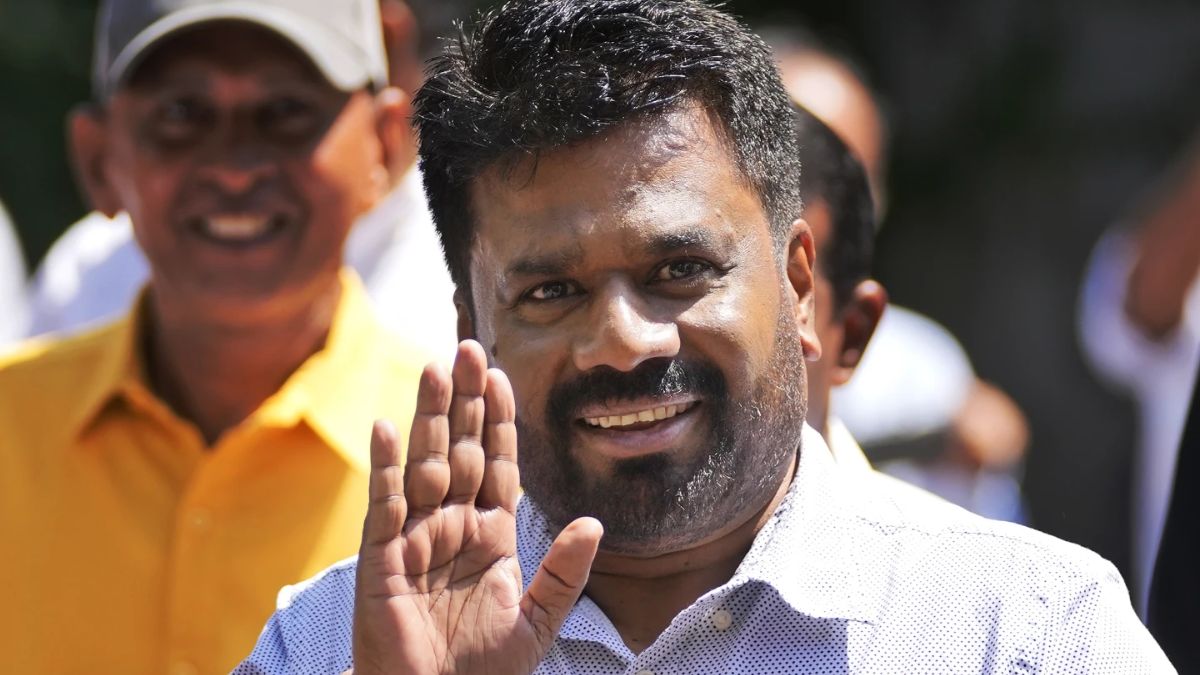Anura Kumara Dissanayake, popularly known as AKD among his supporters after the initials of his name, took oath as Sri Lanka’s ninth president on Monday. Sri Lanka’s Chief Justice Jayantha Jayasuriya administered the oath to Dissanayake , 56, at the presidential secretariat.
He won a landslide against Sajith Premdasa and incumbent President Ranil Wickremesinghe — the prime minister in the Gotabaya Rajapaksa government who was given the responsibility in 2022 after an unprecedented public protest forced the then president to step down and flee the country.
Assuming power amid Sri Lanka’s efforts to rebuild its economy and address social concerns as its path to recovery is monitored by international lenders including the International Monetary Fund (IMF), which has extended a bailout package to the island nation, Dissanayake faces the first major challenge of forming a government.
Watch: Sri Lanka’s Dissanayake wins presidential election
Sri Lanka is a democratic republic that follows a unitary state model of governance in a semi-presidential system. It is a mixture of a presidential system and a parliamentary system. While the president heads the state, the parliament keeps strong checks on the government’s functioning. The president has to appoint a prime minister and a Cabinet of Ministers.
The constitution of Sri Lanka says that all the ministers including the prime minister should be a Member of Parliament. The previous government of Wickremesinghe had 21 members in the Cabinet of Ministers — a group of senior ministers in the government — and 38 other ministers of state and deputy ranks.
Impact Shorts
More ShortsDissanayake’s National People’s Power has only three MPs including the newly elected president in the 225-member house. It presents Dissanayake a tough challenge in selecting his Cabinet of Ministers.
He has promised to dissolve the parliament and announce snap polls. The last parliamentary election was held in 2020. The country’s constitution says that the president can dissolve it any time after four and a half years after the election.
But Sri Lankan media reports have quoted constitution experts saying that Dissanayake may not dissolve the parliament before announcing his prime minister and a Cabinet of Ministers.
The Daily Morning quoted Sri Lankan parliament’s Secretary General Kushani Rohanadheera as saying that Dissanayake may choose to dissolve the house any time after being sworn in as the head of the state. She said, “The Parliament can be dissolved at any time, but the affairs of the government must continue until the next Parliament is elected.”
“For that, the appointment of the Premier and the caretaker Cabinet must be done before the dissolution of the Parliament,” Rohanadheera told The Daily Morning.
Dissanayake will have to resign as an MP, and his place could be filled by another member from his party. It follows a lengthy legal process. Sri Lankan parliament’s secretary general said, “When I am informed about it [Dissanayake’s resignation as an MP], I will inform the Election Commission (EC) that there is a vacancy in the position of an MP. They (EC) will then issue a gazette extraordinary designating the candidate who got the most votes next to Dissanayake in the last Parliamentary Election. However, the President can also dissolve the Parliament even without filling that vacancy.”
Is a four-member Cabinet of Ministers including President Dissanayake enough to run the Sri Lankan government?
Rohanadheera was quoted as saying that the country’s constitution does not specify the minimum number of ministers in the government. “There are rules about the maximum number of ministers that can be in the Cabinet, but there is no such rule about the minimum number.”
Sri Lanka has been battling a serious economic crisis and Dissanayake’s predecessor Wickremesinghe increased taxes substantially to meet the IMF’s conditions for the bailout package that it secured earlier this year.
Increased taxation worked against Wickremesinghe in the just-held election as the voters overwhelmingly backed Dissanayake who promised to reduce the tax burden and renegotiate terms of loans from lenders including the IMF. To fulfil promises he made to voters, Dissanayake might find himself in a difficult situation until a fresh parliamentary election gives his party enough members in the Sri Lankan parliament.


)

)
)
)
)
)
)
)
)



